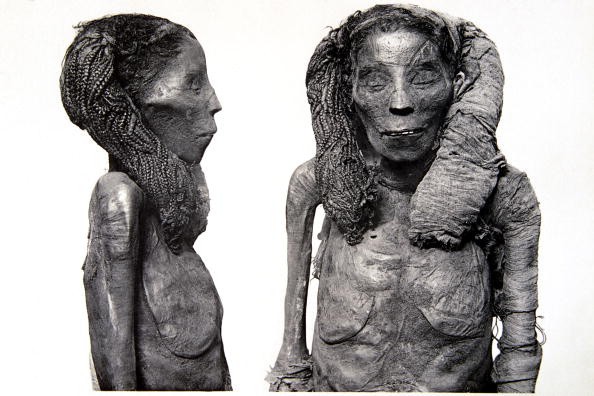A first of its kind discovery was recently reported to have come out of a comprehensive study by scientists of Poland on an Egyptian mummy dating back to 1st century BCE. For decades, it was believed that the said mummy was of a male priest after being X-rayed at a medical center in Otwock, Poland, in 2015.
However, a recent finding confirmed that the body belongs to a pregnant woman, unfolding an unexpected turn of event that was missed out on for decades.
A research group called the Warsaw Mummy Project has been conducting an examination of more than 40 mummies at the National Museum in Warsaw, which started in 2015. After decades of research, the new finding was said to be "absolutely unexpected", according to Dr. Wojciech Ejsmond, an archaeologist who led the research team.

The pregnant Egyptian mummy was known to be the first pregnant embalmed body to be discovered. It was found in royal tombs in Thebes, Upper Egypt, and was an elite of the Theban community, as it was described to have been "equipped with a rich set of amulets". A closer examination theorized the body was around 20 and 30 years of age when it died, and the fetus being 26th-30th week at the time.
Pregnancy practices on ancient times
In an interview with Dr. Ejsmond in The New York Times, he stated that the something weird was observed by anthropologists in the pelvis area of the mummy, an anomaly that turned out to be a leg of a fetus.
The coffin where the mummy was found explained how it was mistaken to be a body of a male priest. Apparently, the hieroglyphs on the mummy's coffin revealed the name of an Egyptian priest, Hor-Djehuty. Dr. Ejsmond explained how archaeological artifacts like mummies 'did not match the coffins in which they were placed' 10 percent of the time.
Dr. Alexander Nagel of the Smithsonian National Museum of Natural History that further research needs to be conducted to actually know more about the what the pregnant mummy went through, like taking microsamples of the mummy's tissue.
At this time, it was not yet revealed exactly how the ancient times practice prenatal care. This study also led them to aim on discovering more about Egyptians' belief in matters like using contraception (honey and crocodile dung) and afterlife of an unborn child.
The Egyptian pregnant mummy opening up for 'new possibilities'
The Journal of Archaeological Science recently published in their study show how this finding opened up new possibilities of gaining more insights on how pregnancy was undergone by women in ancient times, as well as common practices related to maternity. Aside from that, experts say the pregnant mummy will enlighten other contexts such as Egyptian burial customs and their religious view on pregnancy and afterlife of unborn children.
In relation to interdisciplinary research, Dr. Ejsmond expounded how the discovery of the pregnant mummy can pave way to new different understanding and studies of some of the ancient times' traditions and customs, and how the specimen could be a 'good base to start a bigger project'.
© 2025 NatureWorldNews.com All rights reserved. Do not reproduce without permission.





